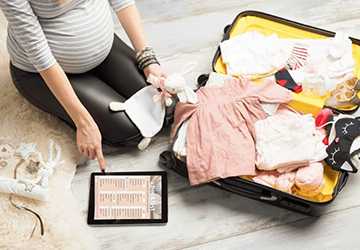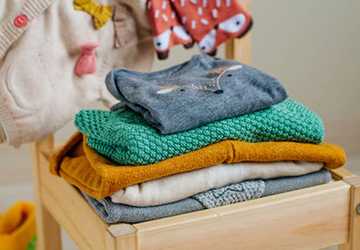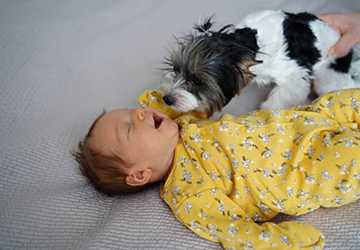How to Choose the Right Diaper for Your Baby
Let's face it, as a new parent, you'll eventually become an expert on all things baby-related. You'll learn everything from feeding and sleep schedules to baby-proofing your home in record time. However, one topic that often leaves new parents feeling overwhelmed is the world of diapers. But don't worry too much; we're here to make one aspect of parenting more accessible for you. This guide has just the guidance on diaper sizing, material, and types to help you pick the right diapers for your baby!
Understanding Different Types Of Baby Diapers
Disposable Diaper
First, we have the trusty disposable diaper - the go-to choice for many parents. With excellent absorbency and overnight protection, disposable diapers are a convenient and reliable option for busy parents and babies needing to stay dry for longer.

Disposable Underwear
For older children struggling with bedwetting, disposable underwear can be a game-changer. These easy-to-use undergarments provide extra protection and help older children maintain their dignity without feeling like a baby.
Pull Ups
As your little one begins to explore the world of potty training, pull-up underwear can make the transition easier. With the look and feel of regular underwear, your child can feel more independent while still having the added protection of a diaper. Plus, some pull-up diapers come with wetness indicators to help your child recognize when to use the potty.
Cloth Diapers
For eco-conscious parents, cloth diapers are a popular choice. These are made from soft, breathable fabrics that are gentle on your baby's sensitive skin.
The Right Size and Fit
Diapering may seem like a never-ending cycle of changing and cleaning, but finding the right size and fit can make all the difference. What you might be blaming on gas or a wrong baby formula could be an ill-fitted diaper size! Let's uncover the secret that will help you sleep at night with a newborn!
How to Choose the Right Diaper?
For your newborn, you'll want to look for a diaper that can accommodate their tiny size without being too restrictive. A U-shaped cutout for the umbilical cord and stretchy materials for growth spurts can be just the right features to keep your baby snug and fuss-free, a dream for all new parents!
As your baby starts to grow and explore their world, their diapering needs will change too. They will require diapers with more absorbent materials and a secure fit to prevent leaks and blowouts. It would help if you had something that could keep up with their adventures and keep them dry and comfortable.
When your baby becomes a toddler, it's time to switch to a diaper that can keep up with its constant motion. A robust and stretchy fit with secure tabs can be a convenient feature to keep your little one moving and grooving!

Diaper Size Chart for Babies
Here is a size chart that will help you choose your baby's diaper size!
| Age | Weight | Recommended Size |
| Newborn | Up to 10 lbs. | Newborn Size |
| Two to four months | 8 - 14 lbs. | 1 |
| Four to seven months | 12 - 18 lbs. | 2 |
| Seven to 12 months | 16 - 21 lbs. | 3 |
| 18 to 48 months | 20 - 32 lbs. | 4 |
| Three years and up | 27 - 35 lbs. | 5 |
| Four years and up | Over 35 lbs. | 6 |
Make Necessary Fit Adjustments
Finding the right diaper size for a baby is the first step to finding a diaper that fits your baby snugly! Next, ensure the diaper fits to prevent leaks and ensure your baby's comfort. Check that the diaper is symmetrical and straight and covers all the critical areas, including the backside and hips. Missing these spots can cause unwanted leaks and make your baby uncomfortable and cranky.
But don't worry; making adjustments is easy! Diapers with resealable tabs allow you to make any necessary modifications for a snug, flexible fit. And let's remember the waistband. Ensure it's positioned correctly at the waist, not too high in front or low in the back.
6 Common Signs of an Ill-fitting Diaper
It's diaper changing time, and you notice something seems off. Is your baby's diaper constantly leaking or causing unsightly blowouts? Are you seeing red marks on your baby's precious skin or hearing frequent cries of discomfort? These may all be signs that your baby's diaper is ill-fitted. So, how can you tell if your little one's diaper needs an upgrade? Let's find out!
Let's start with the basics – butt coverage. Is the diaper covering your baby's bottom as much as it used to? If not, it's time to try a larger size. The right amount of coverage is essential for the diaper to function effectively and prevent leakage.
Next, check the tabs. Are they closer to your baby's hips than their center, or do the wings connecting the charges appear overly stretched? This could be a sign that it's time to size up.
If the tabs on the diaper keep coming off and you feel that it takes more force to pull the tabs securely, it's time to say goodbye to that size(we know it's emotional!). It's more likely that your baby has grown out of that size, or you can also try to switch up to a different type of diaper.
A tight waistband can also indicate that the diaper is too small. Gently pull on the band using your fingers, and there should be a two-digit gap to make the diaper breathable on the baby's skin. If it's too tight, try a larger size.
As parents, we all are familiar with a "blowout" that leaves a mess no parent loves to clean up. While most parents blame the diaper brand for this, it usually happens when it is too small around the waist or thighs.
Red marks due to chafing in the groin, hips, and waist can be another sign that the diaper is too tight. If you see these marks, it's time to try a different size.
Wrapping Up!
Parenting is all about experimentation; sometimes (most of the time), it's a hit-and-miss when finding the right diapers. But at the end of the day, remember that keeping your baby happy, healthy, and comfortable is the most important thing. We wish you the best of luck in your diaper-searching journey, and let's hope you and your baby enjoy nights free of diaper-related issues and full of dreamy sleep (one can expect!). Happy diapering!





